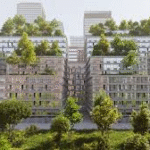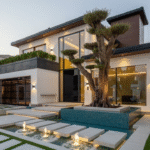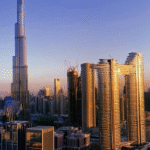Now Reading: Dubai Real Estate 2025: Navigating the Predicted 15% Price Correction
-
01
Dubai Real Estate 2025: Navigating the Predicted 15% Price Correction
Dubai Real Estate 2025: Navigating the Predicted 15% Price Correction
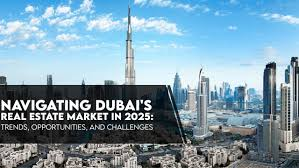
Table of Contents
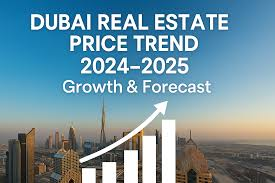
In 2025, Dubai’s real estate market faces a predicted 15% price correction, as forecasted by Fitch Ratings, due to a significant supply increase outpacing population growth. This follows a 60% price surge from 2022 to Q1 2025, driven by infrastructure, tax policies, and visa reforms. This response explores the correction’s causes, impacts, and strategies for investors, with comparisons to Sharjah and Ajman, leveraging insights from blockchain, Golden Visas, and regulatory frameworks. Despite the correction, Dubai’s market remains robust, supported by Dubai Economic Agenda (D33), UAE Vision 2030, and strong fundamentals, offering opportunities for informed investors.
Causes of the Predicted 15% Price Correction
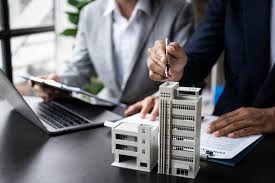
- Supply Surge:
- Fitch projects 210,000 new units in 2025–2026, with 90,000 in 2025 and 120,000 in 2026, compared to 30,000 in 2024. This 16% annual supply growth exceeds the 5% population rise (3.948 million in May 2025, targeting 4 million by year-end), per Fitch Ratings and JobXDubai.
- Oversupply pressures prices, especially in premium areas like Downtown Dubai, where prices rose 20% in 2024 to AED 1,597/sq ft, per Deloitte.
- Sharjah plans 20,000 units by 2026, and Ajman’s supply is limited, reducing correction risks but capping growth, per Sharjah’s Freehold Zones.
- Developer Focus Shift:
- Developers are emphasizing affordable and mid-market properties in areas like Dubai Sports City and Arjan, reducing luxury supply, per S&P Global.
- Mid-market oversupply in Dubai South may lower prices, while luxury areas like Palm Jumeirah maintain 8–10% growth, per DAMAC Properties.
- Sharjah’s Aljada targets mid-market, and Ajman’s Al Zorah focuses on leasehold, avoiding luxury oversupply, per Affordable Housing in Ajman.
- Global Economic Pressures:
- Rising global interest rates increase borrowing costs, and oil price volatility impacts government spending, per Colife. Geopolitical risks may deter investors, per S&P Global.
- Reduced demand in Business Bay (5–7% yields) could intensify correction, though 70% cash-based deals limit mortgage dependence, per S&P Global.
- Sharjah and Ajman, with local buyer focus, are less affected by global sentiment, per Sharjah’s Freehold Zones.
- Market Cycle Peak:
- A 147% price increase over five years indicates a cyclical peak, with correction likely in H2 2025 or early 2026, per Fitch Ratings and Reddit discussions.
- Areas like Jumeirah Village Circle (7.25% growth) may stabilize, per topluxuryproperty.com.
- Sharjah’s steady 5–7% growth and Ajman’s flat market avoid cyclical peaks, per Affordable Housing in Ajman.
Impacts of the Price Correction
- Price Declines: Up to 15% reduction, with mid-market areas like Dubai South and Al Jaddaf most impacted, while luxury Palm Jumeirah sees 8–10% growth, per DAMAC Properties.
- Rental Market: Short-term rentals grow 18%, long-term 13%, driven by 20.5 million tourists and expats, supporting 7–9% yields in Dubai Marina, per Colife.
- Investor Opportunities: Lower prices and 50% construction payment plans (down from 70%) attract buyers in Emaar South, per Fitch Ratings.
- Developer Challenges: New entrants face cash flow issues, while established firms like Emaar and DAMAC leverage backlogs, per S&P Global.
- Economic Resilience: UAE’s 6.2% GDP growth in 2025, driven by real estate, limits correction severity, per DAMAC Properties.
Strategies for Navigating the Correction
- Invest in Resilient Luxury Segments:
- Opportunity: Palm Jumeirah and Dubai Hills Estate offer 5–7% yields, 8–10% growth, and Golden Visa eligibility (AED 2 million), with 948 luxury sales (AED 15 million+) in 2024, per DAMAC Properties.
- Action: Purchase tokenized villas via MANTRA, using Bayut VR tours for selection, per Blockchain in Dubai Real Estate.
- Compliance: Verify freehold status and developer licensing via DLD (www.dubailand.gov.ae), per bhomes.com.
- Capitalize on Mid-Market Discounts:
- Opportunity: Dubai South and Al Jaddaf provide 7–9% yields, 8–12% ROI, with prices starting at AED 600,000, ideal during correction, per Tenco Homes.
- Action: Buy off-plan via Prypco Mint with 50% payment plans, leveraging dubizzle for deals, per Fitch Ratings.
- Compliance: Confirm escrow accounts and RERA compliance via DLD Cube, per RERA Off-Plan Rules.
- Focus on Short-Term Rentals:
- Opportunity: Dubai Marina and Sustainable City Dubai yield 8–10% from tourism, with 18% rental growth, per Colife.
- Action: Purchase via Damac VR tours, list on Airbnb, ensuring Smart Rental Index compliance, per drivenproperties.com.
- Compliance: Register rental contracts with RERA, submit KYC for AML, per Lexology.
- Explore Commercial Investments:
- Opportunity: Business Bay and Sheikh Zayed Road offer 5–7% yields, 7–9% growth, resilient to correction, per Impact of Infrastructure Projects.
- Action: Invest via PHOREE PropVR using JAFZA/DMCC entities, per Lexology.
- Compliance: Ensure 9% corporate tax and eInvoicing via EmaraTax by March 31, 2025, per Understanding UAE’s 15% Corporate Tax.
- Secure Long-Term Assets:
- Opportunity: LEED Gold properties in Tilal Al Ghaf add 10–25% premiums, aligning with UAE Net Zero 2050, per The Impact of Green Certifications.
- Action: Register digital wills with DLD to secure inheritance, use Emaar VR tours, per drivenproperties.com.
- Compliance: Verify Al Sa’fat standards via Dubai Municipality, per Eco-Friendly Communities.
Challenges and Considerations
- Timing Uncertainty: Correction may begin in H2 2025 or 2026, requiring strategic entry, per Fitch Ratings.
- Compliance Costs: Licensing, AML, and tax filings range from AED 10,000–50,000, with AED 10,000 penalties for EmaraTax non-compliance, per PwC Middle East.
- Global Risks: Oil price fluctuations or geopolitical tensions could deepen correction, per Colife.
- Investor Education: 20–30% need guidance on blockchain and tokenization, per PropTech Trends 2025.
Comparisons with Sharjah and Ajman
- Sharjah:
- Market: 5–7% growth, 20,000 units by 2026, centered on Aljada, per Sharjah’s Freehold Zones.
- Compliance: Less digitized escrow and AML, manual deeds, per SRERD.
- Correction Risk: Low due to stable supply, but limited growth potential, per Affordable Housing in Ajman.
- Ajman:
- Market: Flat growth, leasehold-focused Al Zorah, minimal supply, per Affordable Housing in Ajman.
- Compliance: No blockchain, weak escrow, per Sharjah’s Freehold Zones.
- Correction Risk: Negligible, but lacks investor appeal, per Tenco Homes.
Recommendations
- Investment Strategy: Purchase tokenized LEED Gold apartments in Dubai South or luxury villas in Palm Jumeirah during H2 2025 correction, using PHOREE PropVR.
- Compliance Check: Verify licensing, escrow, and deeds via DLD (www.dubailand.gov.ae) and RERA, per bhomes.com.
- Leverage Technology: Use Prypco Mint for tokenized deals and Emaar VR tours for selection, per Blockchain in Dubai Real Estate.
- Legal Support: Engage lawyers for AML, wills, and tax compliance (AED 5,000–15,000), per Apex Capital.
- Tax Planning: Register via EmaraTax (www.tax.gov.ae) by March 31, 2025, consult PwC Middle East, per Understanding UAE’s 15% Corporate Tax.
- Monitor Updates: Track supply and prices via DLD, Emirates 24/7, and Fitch Ratings, per PropTech Trends 2025.
Causes
- Supply Surge: 210,000 units in 2025–2026 (90,000 in 2025, 120,000 in 2026), 16% supply growth vs. 5% population (3.948M), per Fitch.
- Developer Shift: Focus on affordable/mid-market (Dubai South, Arjan), reducing luxury supply, per S&P Global.
- Global Factors: Rising interest rates, oil volatility, geopolitical risks, per Colife.
- Market Cycle: 147% price surge in 5 years signals peak, correction in H2 2025–2026, per Fitch.
Impacts
- Prices: 15% drop, mid-market (Dubai South) hit hardest, luxury (Palm Jumeirah) grows 8–10%, per DAMAC.
- Rentals: 18% short-term, 13% long-term growth, 7–9% yields in Dubai Marina, per Colife.
- Opportunities: 50% payment plans, lower prices in Emaar South, per Fitch.
- Challenges: New developers face cash flow issues, per S&P Global.
- Resilience: 6.2% GDP growth supports market, per DAMAC.
Strategies
- Luxury: Invest in Palm Jumeirah, Dubai Hills (5–7% yields, Golden Visa) via MANTRA, Bayut VR.
- Mid-Market: Buy Dubai South, Al Jaddaf (7–9% yields) via Prypco Mint, 50% plans.
- Rentals: Dubai Marina, Sustainable City (8–10% yields) via Damac VR, Airbnb.
- Commercial: Business Bay, Sheikh Zayed Road (5–7% yields) via PHOREE PropVR, JAFZA.
- Long-Term: LEED Gold in Tilal Al Ghaf (10–25% premiums), digital wills.
Challenges
- Timing: Correction starts H2 2025–2026, per Fitch.
- Costs: AED 10,000–50,000 for compliance, AED 10,000 EmaraTax penalties.
- Risks: Oil, geopolitical issues deepen correction, per Colife.
- Education: 20–30% need blockchain guidance.
Conclusion
Dubai’s predicted 15% price correction in 2025, driven by a 210,000-unit supply surge and global pressures, will primarily affect mid-market areas like Dubai South, while luxury Palm Jumeirah sustains 8–10% growth. With 6–9% yields, 18% rental growth, and 6.2% GDP growth, investors can navigate the correction by targeting tokenized LEED Gold properties via Prypco Mint, leveraging 50% payment plans, and ensuring DLD compliance. Meeting EmaraTax deadlines by March 31, 2025, is critical. Dubai’s market, outpacing Sharjah’s and Ajman’s limited ecosystems, offers long-term resilience and opportunity.
read more: Legal Framework for Foreign Property Ownership in Dubai: What Changed in 2025?
watch more











